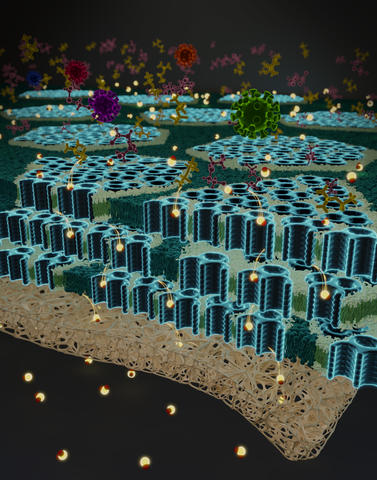Dehydrated Biomimetic Membranes with Skinlike Structure and Function

Novel vapor-permeable materials are sought after for applications in protective wear, energy generation, and water treatment. Current impermeable protective materials effectively block harmful agents but trap heat due to poor water vapor transfer. Here we present a new class of materials, vapor permeable dehydrated nanoporous biomimetic membranes (DBMs), based on channel proteins. This application for biomimetic membranes is unexpected as channel proteins and biomimetic membranes were assumed to be unstable under dry conditions. DBMs mimic human skin’s structure to offer both high vapor transport and small molecule exclusion under dry conditions. DBMs feature highly organized pores resembling sweat pores in human skin, but at super high densities (>1012 pores/cm2). These DBMs achieved exceptional water vapor transport rates, surpassing commercial breathable fabrics by up to 6.2 times, despite containing >2 orders of magnitude smaller pores (1 nm vs >700 nm). These DBMs effectively excluded model biological agents and harmful chemicals both in liquid and vapor phases, again in contrast with the commercial breathable fabrics. Remarkably, while hydrated biomimetic membranes were highly permeable to liquid water, they exhibited higher water resistances after dehydration at values >38 times that of commercial breathable fabrics. Molecular dynamics simulations support our hypothesis that dehydration induced protein hydrophobicity increases which enhanced DBM performance. DBMs hold promise for various applications, including membrane distillation, dehumidification, and protective barriers for atmospheric water harvesting materials.